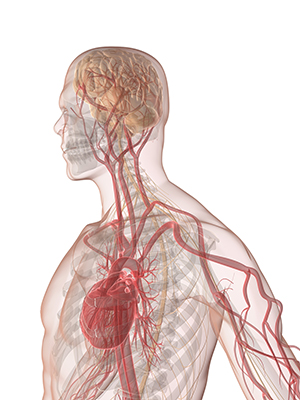We live in a world of complex systems. Organisms, ecosystems, families, countries, and even the earth itself are all complex systems.
Therefore, it is useful to develop a systems view of the world in order to see it accurately. This means seeing that everything exists within a context—everything is in relationship to the other parts of a system and to the system as a whole. Knowing more about relationships within a system and the dynamics of those relationships allows us to make better decisions.
A systems view allows us to complement the more common reductionist scientific paradigm, which focuses on one thing at a time, to the exclusion of everything else. Looking very closely at one thing can reveal important information. However, if we don’t take the systems view into account, and instead depend exclusively on a narrow view, we are in danger of experiencing negative unintended consequences.
What Is a Complex System?
A complex system is characterized by its:
- Parts
- Interconnections between the parts
- Functions or purposes
Interactions between parts produce behaviors that are driven by the function or purpose of the system. Thus, simple interactions between parts lead to the emergence of new order and coherence. This new order is not evident in the parts by themselves, but only in the system as a whole.
Example of a Complex System
Your body is a prime example of a complex system. Many different interconnected parts interacting with one another lead to the emergence of the body as a whole.
There are numerous levels of parts and wholes within the system of the body. Organic molecules interact within cells, cells make up different kinds of tissues, tissues form various organs, and groups of organs function within larger systems (digestive, respiratory, nervous, etc.). Finally, all these systems interrelate to form the body as a complex system.
Why Systems Thinking Is Useful
It is important to consider the whole system when contemplating an intervention or change to any part of that system, so you can minimize unintended negative consequences.

For example, when antibiotics were first developed, their use seemed to be entirely positive. Antibiotics killed bacterial infections and saved millions of lives. However, antibiotics also kill the healthy intestinal bacteria that help us digest food. In addition, their overuse has led to the evolution of so-called "superbugs"―resistant strains that can make bacterial infections more virulent.
Taking a wider view of how different systems within the body relate to one another and looking at the effects in society over time, we see that antibiotics have some negative aspects that must also be considered.
This example demonstrates the need to look at things within the context of the larger systems they are a part of and points out the limitations of simple problem-solving techniques in a complex situation.
Other Examples
To get a sense of how thinking about complex systems can be useful, it’s helpful to look at a variety of examples.
Soccer team: In a soccer team, the players are the parts of the system; the rules of the game are the interconnections; the purpose of the system is both to play and to win the game. In a professional setting the purpose might also include making money. What emerges is the game itself, including all the fantastic plays, surprising moments, and evolution of techniques. Imagine if you isolated one soccer player; he might be able to practice shooting or dribbling, but a game of soccer would never be evident. The game only emerges from the interactions of the parts of the system.
University: A university has many parts: students, professors, administrators, buildings, computers, books, and so on. It also has intangible elements, such as reputation or the culture of the institution. The interconnections include communicating knowledge to students, rules of conduct for faculty, flows of money, and many other things. The purpose of the system is to educate students. The whole that is a university arises from the interactions of these various parts and interconnections. A university isn’t a single student or professor but rather something that emerges through the participation of everyone involved.
Beehive: Bees are the parts of the system. The interconnections are the interactions of the bees in their daily pursuit of survival, like the waggle dances that show other bees where food sources are. The function of the beehive is the function of all organisms: to survive and continue. If we isolate a single bee, we will miss the hive behavior that emerges when bees are together. A single bee has no one to dance for. Complex systems emerge from the interactions of their parts and a beehive is no different.
Using Systems Thinking to Effect Change
Because complex systems are everywhere, it is obvious that a systems view is necessary for seeing accurately and acting coherently. Understanding complex systems allows us to devise intuitive and effective strategies for bringing about beneficial systems change. Start by learning with the following module:
In addition to understanding complex systems, it is useful to know how to work with them.
by Dylan Skybrook, MSc and John Miller, MAE